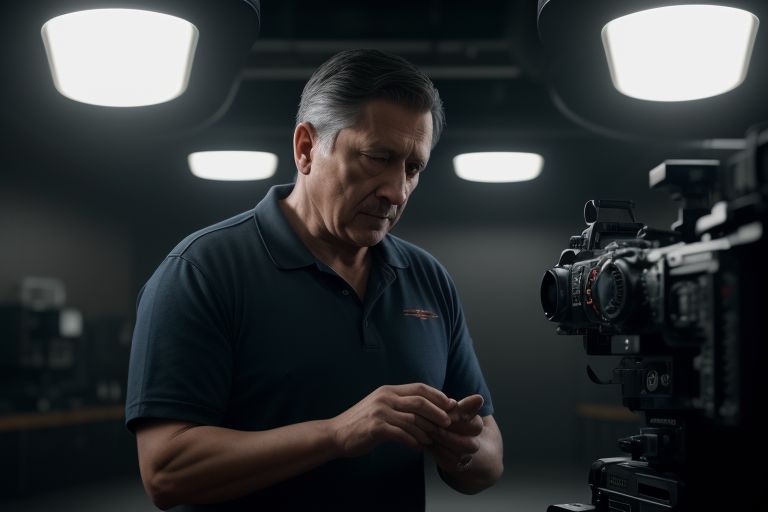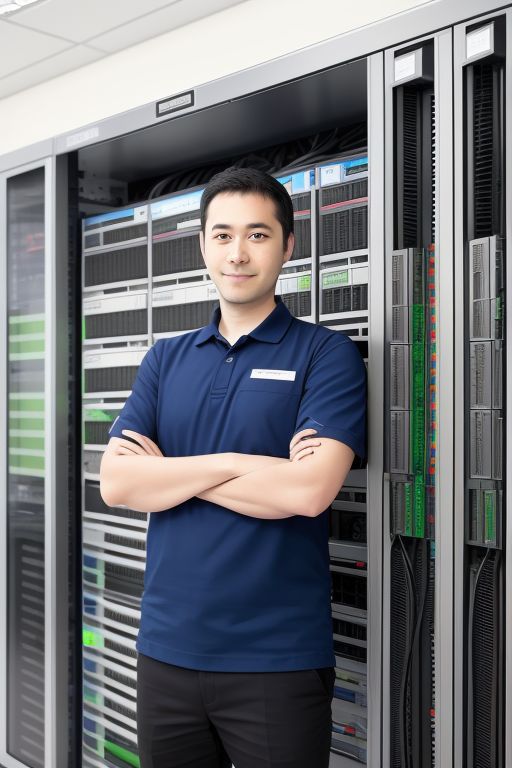The role of the Technical Director (TD) is crucial to ensuring the smooth and seamless execution of live and recorded programs. The TD oversees the technical aspects of a production, coordinating with various departments and managing the technical crew to ensure that everything runs according to plan. This article delves into the diverse responsibilities of a Technical Director, highlighting their significance, required skills, and the impact they have on the overall production.
The Role of a Technical Director in Broadcast
The Technical Director is responsible for the technical quality and coordination of a broadcast. They work closely with directors, producers, and other key crew members to manage the technical aspects of the production. Here’s a detailed look at their key responsibilities:
- Pre-Production Planning
- Technical Setup Planning: The TD collaborates with the director and producers to understand the production requirements and plan the technical setup. This includes determining the necessary equipment, such as cameras, switchers, audio boards, and graphics systems.
- Crew Coordination: The TD assembles and coordinates the technical crew, assigning specific tasks and responsibilities to ensure an efficient workflow during production.
- Technical Rehearsals: They conduct technical rehearsals to ensure that all equipment is functioning correctly and that the crew is familiar with the production plan. This helps identify and resolve any potential issues before the actual broadcast.
- Production Execution
- Control Room Management: During the production, the TD operates from the control room, overseeing the technical execution of the broadcast. They manage the switching of video feeds, audio levels, graphics, and any other technical elements.
- Real-Time Problem Solving: The TD must be able to quickly address and resolve any technical issues that arise during the broadcast. This requires a deep understanding of the equipment and the ability to make rapid decisions.
- Communication: The TD acts as a liaison between the director and the technical crew, ensuring that the director’s vision is executed accurately and efficiently. They communicate instructions to camera operators, audio engineers, graphics operators, and other crew members.
- Post-Production Oversight
- Technical Review: After the broadcast, the TD reviews the technical aspects of the production to identify any issues that occurred and find ways to improve future broadcasts. They provide feedback to the technical crew and suggest improvements.
- Equipment Maintenance: The TD ensures that all technical equipment is properly maintained and ready for future use. This includes conducting regular checks and coordinating repairs or replacements as needed.
Key Skills Required for a Technical Director
Being an effective Technical Director requires a combination of technical knowledge, leadership abilities, and problem-solving skills. Here are some of the most critical skills needed:
- Technical Proficiency: TDs must have a thorough understanding of broadcast equipment, including cameras, switchers, audio boards, graphics systems, and control room operations.
- Leadership: Strong leadership skills are essential for managing the technical crew and coordinating various aspects of the production.
- Problem-Solving: The ability to quickly address and resolve technical issues is crucial, especially during live broadcasts.
- Communication: Effective communication with the director, producers, and technical crew is vital for ensuring that all tasks are carried out smoothly.
- Attention to Detail: Precision and attention to detail are necessary to ensure that all technical elements are executed correctly and that the broadcast meets the highest quality standards.
The Impact of a Technical Director
The TD’s role is central to the technical execution and overall quality of a broadcast. Their work directly influences the efficiency and success of the production. Here are some ways TDs make a significant impact:
- Technical Quality: By overseeing the technical aspects of the production, TDs ensure that the broadcast maintains high-quality audio and video standards.
- Efficiency: Efficient management of the technical crew and equipment ensures that productions run smoothly, minimizing downtime and delays.
- Problem Resolution: TDs handle technical issues promptly, preventing small problems from escalating and keeping the production on track.
- Support for Creative Vision: By executing the director’s vision accurately, TDs help achieve the desired aesthetic and narrative goals of the production.
The Technical Director’s Workflow in Broadcast Production
To understand the role of a TD, it’s essential to look at their workflow in detail, from pre-production to post-production.
- Pre-Production Phase
- Technical Planning: The TD collaborates with the director and producers to plan the technical setup, determining the necessary equipment and crew requirements.
- Rehearsals: They conduct technical rehearsals to ensure that all equipment is functioning correctly and that the crew is familiar with the production plan. This helps identify and resolve any potential issues before the actual broadcast.
- Coordination: The TD assembles and coordinates the technical crew, assigning specific tasks and responsibilities to ensure an efficient workflow during production.
- Production Phase
- Control Room Management: During the production, the TD operates from the control room, overseeing the technical execution of the broadcast. They manage the switching of video feeds, audio levels, graphics, and any other technical elements.
- Real-Time Problem Solving: The TD must be able to quickly address and resolve any technical issues that arise during the broadcast. This requires a deep understanding of the equipment and the ability to make rapid decisions.
- Communication: The TD acts as a liaison between the director and the technical crew, ensuring that the director’s vision is executed accurately and efficiently. They communicate instructions to camera operators, audio engineers, graphics operators, and other crew members.
- Post-Production Phase
- Technical Review: After the broadcast, the TD reviews the technical aspects of the production to identify any issues that occurred and find ways to improve future broadcasts. They provide feedback to the technical crew and suggest improvements.
- Equipment Maintenance: The TD ensures that all technical equipment is properly maintained and ready for future use. This includes conducting regular checks and coordinating repairs or replacements as needed.
The Evolution of the Technical Director’s Role
The role of the Technical Director has evolved significantly with advancements in technology and changes in production methods. Today’s TDs must stay updated with the latest tools and techniques in the industry:
- Digital Production Tools: The adoption of digital production tools has expanded the capabilities of TDs, allowing for more precise control and dynamic execution of technical elements.
- Remote Production: With advancements in remote production technology, TDs can now manage broadcasts from different locations, enabling more flexibility and efficiency.
- Interactive and Multi-Platform Content: TDs must now consider multiple platforms and formats, including interactive content, live streaming, and on-demand services, to reach a broader audience.
- Enhanced Graphics and Effects: The integration of advanced graphics and special effects has added new dimensions to broadcast productions, requiring TDs to be proficient in using these technologies.
Real-World Examples of Technical Directors
To illustrate the impact and responsibilities of Technical Directors, let’s look at some real-world examples:
- Live News Broadcasting
- TD’s Role: In live news broadcasting, the TD is responsible for managing the technical execution of the news program. They coordinate with the anchor, reporters, and technical crew to ensure that all elements, such as video feeds, graphics, and audio, are seamlessly integrated.
- Challenges: Live news requires quick decision-making and the ability to handle breaking news and unexpected changes in real-time. The TD must be able to manage these challenges efficiently.
- Sports Broadcasting
- TD’s Role: In sports broadcasting, the TD oversees the technical aspects of live sports events, managing multiple camera feeds, instant replays, graphics, and commentary. They work closely with the director to ensure that the broadcast captures all the action and excitement of the game.
- Challenges: Sports broadcasts involve fast-paced action and dynamic camera work, requiring the TD to make rapid decisions and adjustments to ensure a smooth and engaging broadcast.
- Television Shows
- TD’s Role: For television shows, the TD manages the technical execution of the production, coordinating with the director, producers, and technical crew to ensure that all elements, such as video feeds, audio, and graphics, are seamlessly integrated.
- Challenges: Television productions often involve complex setups and multiple technical elements, requiring the TD to ensure that everything runs smoothly and meets the desired quality standards.
Conclusion
The role of a Technical Director in broadcast is multifaceted and essential to the success of any production. TDs are the technical leaders who ensure that all technical aspects of the broadcast are executed smoothly and efficiently. Their responsibilities span technical, managerial, and problem-solving tasks, requiring a unique blend of skills and expertise.
Technical Directors play a crucial role in ensuring high-quality broadcasts, contributing significantly to the overall impact and success of the production. Their work enhances the narrative, engages the audience, and ensures that the production runs smoothly and efficiently.






Leave a Reply